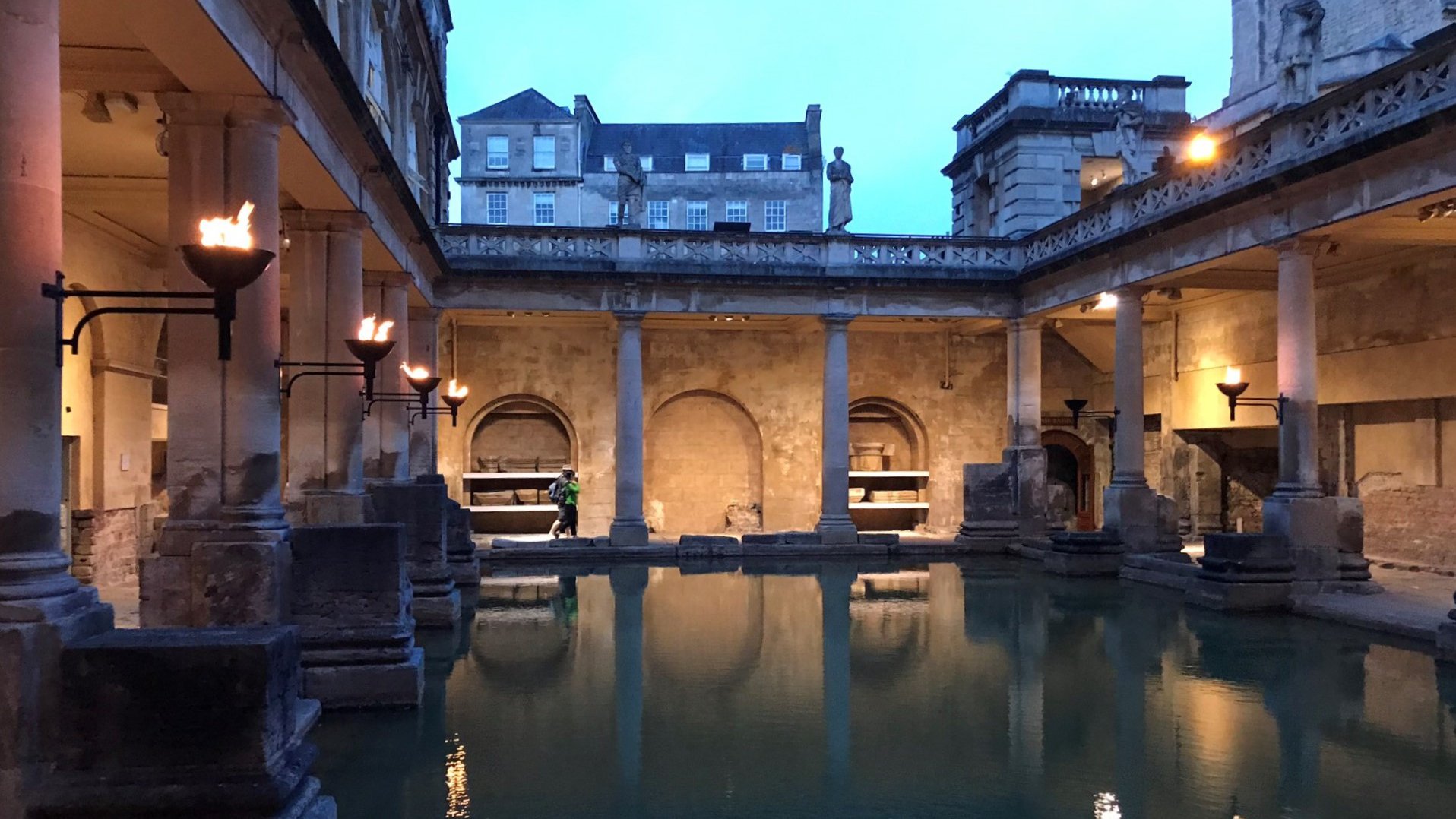

The same day as No.1 Royal Crescent we also had a workshop at the Roman Baths.
The natural springs on the site were used as a place of worship by the Celts then developed by the Romans for social and religious bathing starting in ca. 60 AD. Both groups dedicated the natural spring to a god (Suilis, and Minerva, respectively). The Romans created a complex around the baths and used them for hundreds of years. After the Romans withdrew from Britain the Baths fell into disrepair and were modified over several centuries. The original Baths have been excavated and interpreted for visitors among the Georgian architecture.
The OPP's first stop there was to talk to the Roman Bath's Learning & Participation Manager, Lindsey Braidley. She had a PowerPoint ready to go for us and a lovely a tea/coffee break. We discussed the important balancing relationship between 'Customers, Conservation, and Commercial' in museums, reaching new audiences, providing interactive components, and education elements for the institution.
We also talked about the large overhaul of exhibition space and design the staff had executed over the past few years, mainly to bring interpretation away from art history and more toward stories about people. They wanted to increase accessibility and interactive experience because of public requests.
After our talk with Lindsey we toured the Baths from start to finish. The tour starts at the top veranda above the baths, the goes to a giant exhibition about the archaeology, objects, and use of the area, then a walk through the underground ruins, more exhibit, then the lower level of the baths next to the water and spa areas. There was a lot to take in.
After our official visit to the Roman Baths a group of us went to the Bath Stable for food and craft cider. After that we returned to the Baths for a torch-lit tour of the Roman spaces. I really liked getting to see the baths at night and it was much less crowded then too than the middle of the day. We followed a fantastic tour led by Liv, a guide who really knew her stuff. The tour was a perfect mix of the spaces' use and function, Roman hygiene culture, and roman architecture history- complete with props and technology components.
It was interesting seeing the spaces during both times- super crowded with tourists and then almost empty with a few night owls. That experience showed how versatile the spaces can be, such a beautiful and serene place can also accommodate thousands of people per day. Fun Fact: The Baths get 1.2 MILLION visitors per year.
Overall we had a great time at the Roman Baths! We took advantage of the low crowds in the evening to have many photo-ops:

Museum Professional. Traveler. Cat lover.